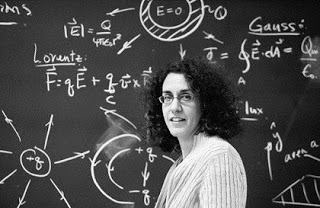It was years since I had stepped into the reference section of a university library. The feeling was akin to what you would experience if you had finally bathed in a tropical lagoon after years of living in the desert. There was a 65-volume reference set on heterocyclic chemistry, a CRC handbook that focused only photobiology and photochemistry, a gorgeous astronomical atlas, a brand new textbook on Chinese herbal medicines.
The thought occurred to me that when I retire I will devote a day of every week to devouring such shelves. And if only I could trade all the time I have spent watching and following dishonest athletes for future time in a great library. When I stepped back into the lobby of the concert hall and into the auditorium, I was treated to the fine wit and enthusiasm of neutron star investigator, Victoria Kaspi. In 1993 when she completed her PhD, Joseph Taylor, her thesis advisor was awarded a Nobel Prize for discovering binary pulsars. Einstein’s theory of general relativity predicted that two neutron stars would emit gravitational waves as they orbit a common center of mass.
The waves would carry away orbital energy and cause the two stars to draw closer together. Taylor found that the orbital period of the pulsar system was indeed declining: the two bodies were rotating faster and faster about each other in an increasingly tight orbit.
 When the prize was announced she said it was the greatest feeling she had ever experienced. (And yes, she does have a life that comes with a husband and children.) Her energy level did not wane during the question period.
When the prize was announced she said it was the greatest feeling she had ever experienced. (And yes, she does have a life that comes with a husband and children.) Her energy level did not wane during the question period. I found out that neutron stars have a proton-electron crust that is probably responsible for pulsars’ intense magnetic field, which cannot be generated by neutrons. After the question period, she came to a wine and cheese reception. She literally walked two feet past the entrance only to be swarmed by more inquisitive guests. Almost 45 minutes later, when I finally left, she still had not moved from the spot. She had not had a chance to taste the fine wine or savour any of the vegetables or cheese. Instead she was still conversing with the same intensity she had displayed when she first walked on stage two and a half hours earlier.
The public had come across a true star.